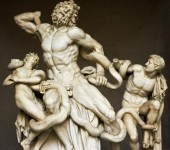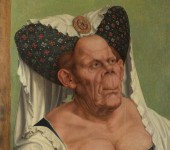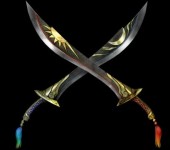
As you have probably noticed from part I of this article, the aim is not to make a list of religious books, but rather of fictional books that have adapted some of the Christian message to their stories. What we then have is a very interesting book embedded with some reasonable and positive values.
5. “A Christmas Carol” by Charles Dickens
Dickens’ “A Christmas Carol” has become deeply imprinted in the culture of Christmas. The story talks about Ebenezer Scrooge, an evil, unfriendly and hostile old money lender who does not care if his actions have dire consequences for countless families. Yet, on Christmas Eve, after being visited by the three ghosts of Christmas, Ebenezer is completely transformed. The tale is full of lessons about generosity, love, care for one’s fellow man and the constant hope of redemption.
4. “The Pilgrim’s Progress” by John Bunyan
Yet another allegorical tale aimed at transmitting religious lessons through the adventures of its characters. “The Pilgrim’s Progress” was very popular when it had first been published. The main character, Christian, begins his travels when a man named Evangelist directs him to the Wicked Gate. Christian leaves his wife and children with a heavy backpack on his back. The backpack is said to contain the knowledge of his sin while his destination is redemption. The story succeeds in showcasing some of the unique characteristics of the early XIXth century American religious communities. One very interesting encounter is that between Christian and Mr. World Wiseman, who tells the wary pilgrim that he should be guided by the reason of earthly law, but Christian refuses. Keep in mind that that this was a time when the separation of Church and State was still a relative novelty.
3. “The Faerie Queene” by Edmund Spenser
“The Faerie Queene” is an incomplete epic English poem which surprises through its length and deep symbolism. Being six books long, the poem is probably the longest one ever produced in the English language. Each book describes a particular virtue, starting with holiness and ending with justice and courtesy. The tale begins with the Redcrosse Knight, representing King George of England, travelling through the countryside. He gets involved in perilous adventures and meets strange and magical characters. Among the villains present in the poem, we see the Dragon (Satan), Duessa (the False Church) and Archimago (Paganism).
2. “Paradise Lost” by John Milton
Rather than being allegorical, as most of the books in this list are, “Paradise Lost” uses its story as a means of analyzing some extremely difficult philosophical questions, including: why does God allow us to suffer, why are we imperfect and how can we save ourselves? One of the most interesting characters of the book is Satan, who does not see himself as an evildoer, but rather as the victim of a terrible injustice. From the depths of Hell, he and his minions plan to conquer Heaven and replace God. Humanity also enters the picture as a tool employed by Satan to enrage God. One of the most memorable scenes is the actual battle for Heaven, where the Angels and Demons fight it out to the bitter end.
1. “La Divina Commedia” by Dante Alighieri
“The Divine Comedy” is among the most exceptional works of Christian inspired literature not only due to its incredibly beautiful style, its expressivity and the depth of its symbolism, but also due to the elaborate Universe it succeeded in creating. Hell is an especially captivating component of Dante’s work. It is divided in 9 circles, depending on the severity of one’s crimes, and borrows some of the most terrifying concepts from the ancient Greek and Roman hells. Dante uses this opportunity to classify and criticize some of the most famous personalities of his time and the past. Homer, Virgil and Ovid, for instance are in purgatory, alongside Saladin and Cezar, but Alexander the Great is on the 7th Circle of Hell, boiling in a river of blood. “La Divina Commedia” stands alone when it comes to the power of the images it creates. It’s definitely worth giving a change.








